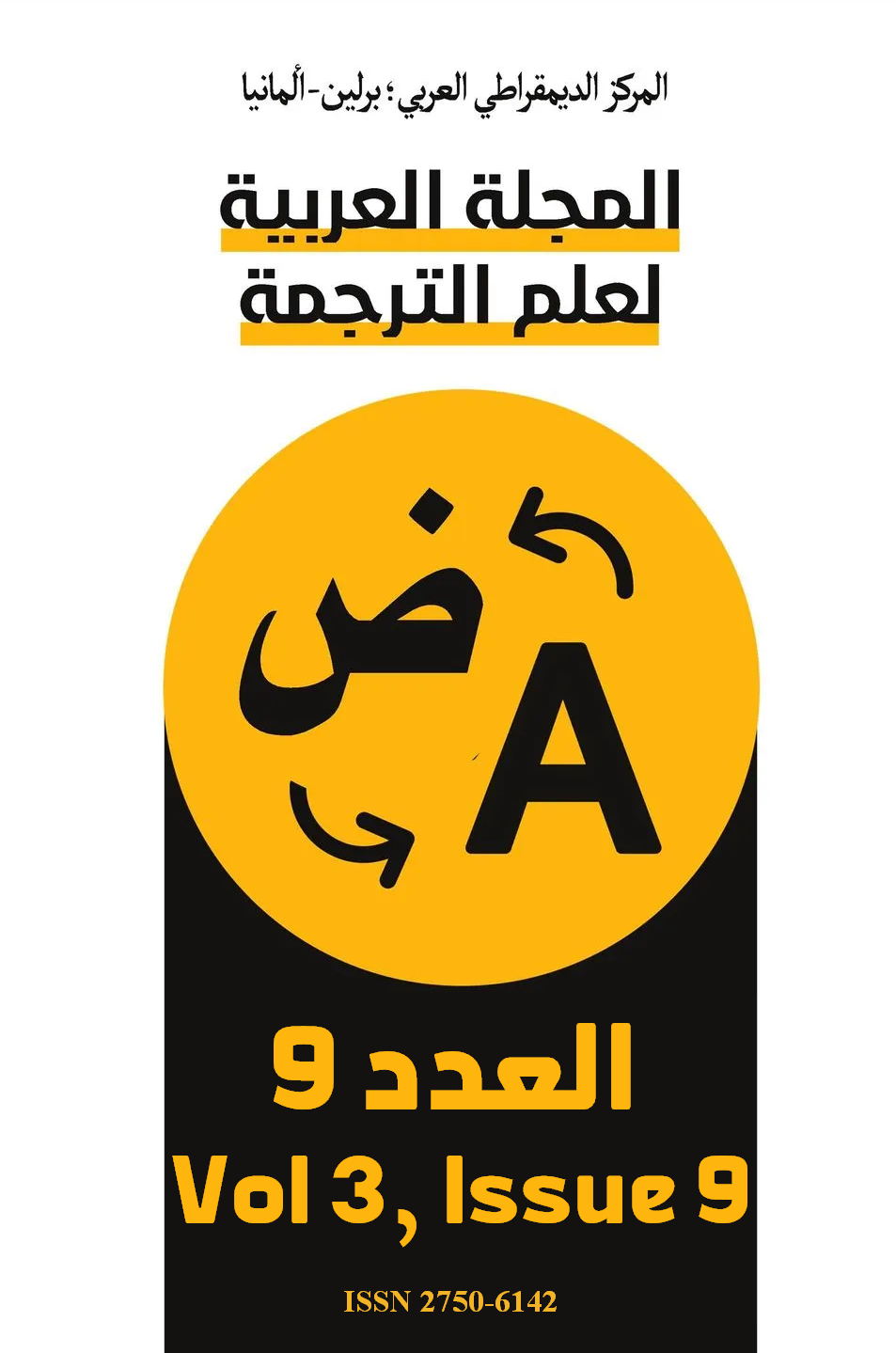Teaching Computational Linguistics in English Language Academic Programs
DOI:
https://doi.org/10.63939/AJTS.7w6f3637Keywords:
Digital Humanities, Python, Computational Linguistics, Natural Language Processing, TranslationAbstract
This study aimed at suggesting a syllabus named “Introduction to Computational Linguistics” to be taught within the programs of Language Teaching and Translation in the Yemeni Universities. This course could be a threshold for scientific study of language through dehumanizing the routinely-repeated processing, analyzing and even production of natural human languages to save time and effort, and avoid bias and subjectivity. The study method relied on a review for several similar programs from well-known universities which included this course within their study syllabi. It also used a field survey through which academics and professionals who gave their insights about the feasibility of including CL within the programs of language departments in the Yemeni Universities. A review to previous research papers and books highlighted the importance of teaching language processing and programming at language programs as well that highlight the importance of giving training to students of Language programs to introduce students to Natural Language Processing (NLP) skills such as tagging, tokenizing, parsing, sentiment analyzing, machine translation, text production, analysis and summarization that could be handled in later courses. The study concluded with a strong recommendation for tradition language schools to include CL course within their academic language programs either within the BA and/or MA program syllabi either as ready-made software track or as a programming track. Later appraisal might give insightful feedback for the development phase to the concerned Language program.
Downloads
References
Baker, P., Hardie, A., & McEnery, T. (2006). A Glossary of Corpus Linguistics. Edinburgh: Edinburgh University Press Ltd. doi: https://doi.org/10.1515/9780748626908 DOI: https://doi.org/10.1515/9780748626908
Britannica. (2022, 2 2). https://www.britannica.com/event/Stone-Age. Retrieved from Stone Age: https://www.britannica.com/event/Stone-Age
Chen, X., Wang, L., & Liu, Q. (2017). Teaching Computational Linguistics: Integrating Linguistic Theories into the Classroom. Language Education and Technology, 22(3), 215-230
Fasold, R., & Connor-Linton, J. (2013). An Introduction to Language and Linguistics (Vol. 6th). New York: Cambridge University Press. doi: https://doi.org/10.1017/cbo9781107707511 DOI: https://doi.org/10.1017/CBO9781107707511
Hammond, M. (2020). Python for Linguists. Cambridge: Cambridge University Press. doi: https://doi.org/10.1017/9781108642408 DOI: https://doi.org/10.1017/9781108642408
Hausser, R. (2014). Foundations of Computational Linguistics. New York: Springer Heidelberg. doi: https://doi.org/10.1007/978-3-642-41431-2 DOI: https://doi.org/10.1007/978-3-642-41431-2
Ivashkevych, L. (2019). TEACHING PROGRAMMING WITH PYTHON FOR LINGUISTICS STUDENTS: WHYS AND HOW-TOS. Advanced Linguistics, pp. 4-24 DOI: https://doi.org/10.20535/2617-5339.2019.3.165687
Jones, C., & Brown, M. (2018). Enhancing Language Programs: The Role of Computational Linguistics in Linguistic Education. Journal of Applied Linguistics, 45(4), 321-335
Johnson, M. (2011). Linguistic Issues in Language Technology. How relevant is linguistics to computational linguistics, 6(7), pp. 1-23 DOI: https://doi.org/10.33011/lilt.v6i.1249
Kubrický, J., & Částková, P. (2014). Teachers ICT Competence and Their Structure as A Means of Developing Inquiry-Based Education. 5th World Conference on Learning, Teaching and Educational Leadership (pp. 882-885). Procedia - Social and Behavioral Sciences DOI: https://doi.org/10.1016/j.sbspro.2015.04.071
Lebert, M. (2021, April 16). Artificial intelligence (AI) — glossary. Retrieved from https://marielebert.wordpress.com/?s=Sentiment+analysis+
Levshina, N. (2015). How to do Linguistics with R: Data exploration and statistical analysis. Amsterdam / Philadelphia: John Benjamins Publishing Company DOI: https://doi.org/10.1075/z.195
Ling Liu, M. T. (Ed.). (2009). SpringerLink. Retrieved from Encyclopedia of Database Systems: https://link.springer.com/referenceworkentry/10.1007/978-0-387-39940-9_417
Muthanna, A., & Karaman, A. (2014). Higher education challenges in Yemen: Discourses on English Teacher Education. International Journal of Educational Development, 40-47. doi: http://dx.doi.org/10.1016/j.ijedudev.2014.02.002 DOI: https://doi.org/10.1016/j.ijedudev.2014.02.002
NATIONAL STRATEGY FOR THE DEVELOPMENT OF HIGHER EDUCATION IN YEMEN. (2005), Sana'a: Ministry of Higher Education and Scientific Research
Panggabean, H. &. (2015). Journal of Humanities and Social Science (IOSR-JHSS). Computational Linguistics Application Using Python Programming, 20(7), pp. 18-30
Roth, B., & Wiegand, M. (2021, April 21). Computational Linguistics. MIT Press Direct, pp. 217-220. doi: https://doi.org/10.1162/coli_r_00400 DOI: https://doi.org/10.1162/coli_r_00400
Sakthi Vel, S. (2017). Applications of Computational Linguistics to Language Studies: An Overview. International Journal of Engineering Research in Computer Science and Engineering (IJERCSE), 4(3), pp. 239-244
Smith, A., & Johnson, B. (2016). The Synergy of Linguistics and Computational Linguistics: A Call for Collaboration. Computational Linguistics Journal, 40(2), 112-128
Standford, U. o. (2022, 2 16). index. Retrieved from https://nlp.stanford.edu/IR-book/html/htmledition/index-1.html
Victoria University of Wellington. (2022, March 9). Retrieved from Course offering: https://www.wgtn.ac.nz
Voutilanen, A. (2005). The Oxford Handbook of Computational Linguistics. In R. Mitkov (Ed.). Oxford.
Downloads
Published
Issue
Section
License

This work is licensed under a Creative Commons Attribution-NonCommercial 4.0 International License.
As an open-access the journal follows the CC BY-NC 4.0 Attribution-NonCommercial 4.0 International which states that:
- you are free to:
- Share— copy and redistribute the material in any medium or format.
- Adapt— remix, transform, and build upon the material.
- Under the following terms:
- Attribution— You must give appropriate credit, provide a link to the license, and indicate if changes were made. You may do so in any reasonable manner, but not in any way that suggests the licensor endorses you or your use.
- NonCommercial — You may not use the material for commercial purposes.
- No additional restrictions — You may not apply legal terms or technological measures that legally restrict others from doing anything the license permits.












